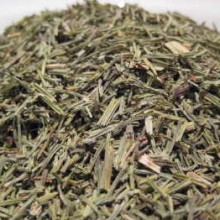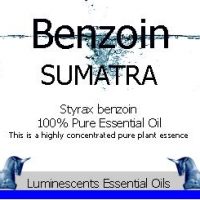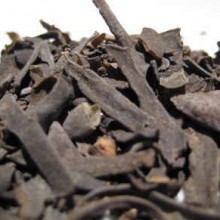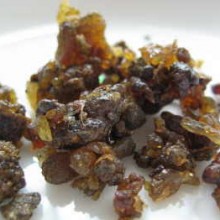The Fraser Fir (Abies fraserii) is a species of fir native to the mountains of the eastern United States. It is closely related to Abies balsamea (balsam fir), of which it has occasionally been treated as a subspecies (as A. balsamea subsp. fraseri (Pursh) E.Murray) or a variety (as A. balsamea var. fraseri (Pursh) Spach)
It is a small evergreen coniferous tree growing to 1015 m (rarely to 25 m) tall with a trunk 4050 cm (rarely to 75 cm) diameter. The crown is conical, with straight branches from horizontal to angled 40° upward from the trunk; it is dense when the tree is young, but becomes more open as it ages. The bark is thin and smooth, gray-brown with numerous resin blisters on young trees, becoming fissured and scaly with age. The foliage is strongly turpentine-scented. The leaves are needle-like, arranged spirally on the twigs but twisted at the base to spread in two rows; they are 1023 mm long and 22.2 mm broad, flat and flexible with a rounded or slightly notched tip, dark green to glaucous green above, often with a small patch of stomata near the tip, and with two silvery white stomatal bands on the underside. The cones are erect, cylindric, 3.5-7 cm (rarely 8 cm) long and 2.53 cm (rarely 4 cm) broad, dark purple, turning light brown when mature, with long reflexed green, yellow or pale purple bract scales, and often resinous. The cones disintegrate when mature at 46 months old to release the winged seeds.
The balsam fir variety Abies balsamea var. phanerolepis is regarded by some botanists as a natural hybrid between balsam fir and Fraser fir, as Abies × phanerolepis (Fernald) Liu.
It is restricted to the southeastern Appalachian Mountains in southwestern Virginia, western North Carolina and eastern Tennessee, where it occurs at high elevations, from 1200 m up to 2,037 m (the summit of Mount Mitchell, the highest point in the region). It lives in acidic moist but well-drained sandy loam, and is usually mixed with Picea rubens (Red Spruce). Other trees it grows with include Tsuga caroliniana (Carolina Hemlock), Betula alleghaniensis (Yellow Birch), Betula papyrifera (Paper Birch), and Acer saccharum (Sugar Maple). The climate is cool and moist, with short, cool summers and cold winters with heavy snowfall.
The species is severely damaged by a non-native insect, the Balsam woolly adelgid (Adelges piceae). The insect’s introduction and spread led to a rapid decline in Fraser fir across its range, with over 80% of mature trees having been killed. The rapid regeneration of seedlings with lack of canopy has led to good regrowth of healthy young trees where the mature forests once stood. However, when these young trees get old enough for the bark to develop fissures, they will likely be attacked and killed by the adelgids as well. For this reason, the future of the species is still uncertain. The decline of the Fraser fir in the southern Appalachians has contributed to loss of moss habitat which supports the Spruce-fir moss spider.
Reported Attributes of Fraser Fir:-
Traditional and Emotional uses reportedly include:-
This is a popular although much rarer oil than Siberian Fir and is used to bring out masculine, attributes to mens fragrances, bath preparations, air fresheners, herbal, moss, soaps, and shaving creams. Fir needle is reported to help with arthritis, bronchitis, colds, coughs, flu, muscle aches, rheumatism, sinusitis and, of course, aromatically is very evocative.
Fraser fir is widely used as a Christmas tree. Its fragrance, shape, strong limbs, and ability to retain its soft needles for a long time when cut (which do not prick easily when hanging ornaments) make it one of the best trees for this purpose. The Fraser fir has been used more times as the Blue Room Christmas tree (the official Christmas tree of the President of the United States’s White House) than any other type of tree.
Fraser Fir Essential Oil Blends well with:-
Cedar Leaf, All Citrus oils, Galangal, Galbanum, Ginger, Geranium, Juniper Berry, Labdanum, Laurel Leaf, Lavandin, Lavender.
Historical Note:-
The species is named after the Scottish botanist John Fraser (17501811), who made numerous botanical collections in the region. It is sometimes mis-spelled as “Frazer” or “Frazier”. In the past, it was also sometimes known as she-balsam” because resin could be milked from its bark blisters, in contrast to the balsam (Red Spruce) which could not be milked. It has also occasionally been called balsam fir, inviting confusion with A. balsamea.
CAUTIONS:
May cause skin irritation in some individuals if used in high concentrations.





